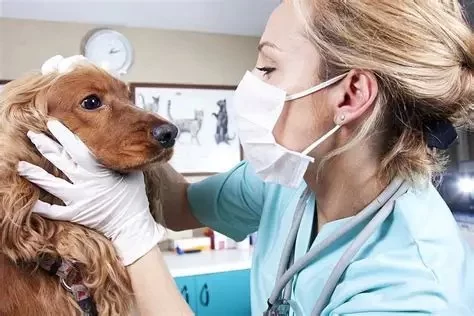- 1 - Understanding Pet Hypocalcemia
- 2 - Recognizing Symptoms of Hypocalcemia
- 3 - Common Causes of Calcium Deficiency in Pets
- 4 - Diagnosis and Professional Assessment
- 5 - Treatment Options for Hypocalcemia
- 6 - Real-Life Case of Successful Treatment
- 7 - Preventing Hypocalcemia in Pets
- 8 - Why Trust Hidden Brook Veterinary
Understanding Pet Hypocalcemia
Hypocalcemia, or low calcium levels in the blood, is a serious condition that can affect both dogs and cats. Calcium is essential for many physiological functions, including nerve transmission, muscle contraction, and bone strength. When calcium levels drop too low, your pet’s body struggles to maintain normal function, leading to visible health issues and even emergencies if left untreated.
Recognizing and treating pet hypocalcemia promptly is vital for maintaining your furry friend’s overall health. The condition can appear suddenly or develop gradually depending on the underlying cause, making awareness essential for every responsible pet owner.
Recognizing Symptoms of Hypocalcemia
1. Early Behavioral Changes
Pets suffering from hypocalcemia often display unusual anxiety, restlessness, or muscle twitching. Dogs may become more vocal or pace frequently, while cats may appear irritable or lethargic. These behavioral cues are early warning signs that something may be wrong with their calcium balance.
2. Physical Symptoms
As calcium levels continue to drop, more pronounced symptoms appear, including tremors, muscle stiffness, and loss of coordination. In severe cases, seizures or spasms may occur. You might also notice that your pet’s movements become jerky or unsteady, a telltale sign of muscle dysfunction caused by low calcium.
3. Severe Health Emergencies
If untreated, hypocalcemia can progress to life-threatening stages, leading to heart irregularities or difficulty breathing. At this point, immediate veterinary intervention is crucial.
Common Causes of Calcium Deficiency in Pets
1. Postpartum Eclampsia
In nursing female dogs and cats, hypocalcemia frequently develops due to calcium loss during lactation. Known as “milk fever,” this condition can cause trembling, restlessness, and even collapse if not treated quickly.
2. Poor Nutrition
Diet plays a major role in your pet’s calcium balance. Homemade or improperly balanced diets may lack sufficient calcium or vitamin D, both essential for absorption and bone health. Feeding a complete and balanced diet helps prevent this problem.
3. Parathyroid Disorders and Chronic Illness
The parathyroid glands regulate calcium levels. When they malfunction or your pet has kidney disease, calcium regulation becomes impaired, resulting in hypocalcemia.
Diagnosis and Professional Assessment
A veterinarian will begin with a physical exam, observing muscle responses and overall condition. Blood tests are essential to confirm low calcium levels and to rule out other causes such as hypoglycemia or electrolyte imbalances. In some cases, additional tests—like X-rays or urinalysis—may be needed to identify any underlying organ dysfunction.
It’s critical to avoid self-diagnosis. While some symptoms may appear mild, untreated hypocalcemia can escalate rapidly into an emergency. A qualified vet can determine both the severity and root cause to design the right treatment plan.
Treatment Options for Hypocalcemia
1. Immediate Medical Treatment
In acute cases, veterinarians often administer calcium intravenously to stabilize the patient. This method acts quickly to restore normal blood calcium levels and prevent complications like seizures or cardiac issues.
2. Ongoing Management and Medication
Once stabilized, pets may require oral calcium or vitamin D supplements to maintain healthy levels. Your vet might also recommend a modified diet rich in calcium sources. Regular blood work ensures calcium remains within the safe range.
3. Lifestyle Adjustments
Monitoring your pet’s diet, hydration, and stress levels plays a key role in recovery. Gentle exercise and routine vet checkups further support long-term stability.
Real-Life Case of Successful Treatment
At Hidden Brook Veterinary, one memorable case involved a mother dog named Daisy who developed severe hypocalcemia after giving birth. Her owner noticed constant trembling and panting. Upon testing, Daisy’s calcium levels were dangerously low. The veterinary team provided emergency calcium therapy, followed by dietary adjustments and home monitoring. Within a week, Daisy was back to her playful self — a powerful reminder of how prompt care can save lives.
Stories like Daisy’s highlight the importance of early recognition and professional guidance in addressing calcium deficiencies in pets.
Preventing Hypocalcemia in Pets
Prevention begins with nutrition and regular veterinary care. Feed your pet a balanced diet approved for their species and life stage. Regular checkups allow your vet to detect early changes in calcium levels or related conditions like kidney dysfunction. For nursing mothers, dietary supplements may be recommended to avoid postpartum complications.
Awareness and proactive care are your best defense against hypocalcemia. Always keep an eye out for behavioral or physical changes — your pet’s body often signals distress before major symptoms appear.
Why Trust Hidden Brook Veterinary
Hidden Brook Veterinary offers expert diagnostic and treatment services for conditions like hypocalcemia. Their team combines advanced medical technology with compassionate care, ensuring that every pet receives personalized attention. Whether it’s an emergency situation or preventive wellness plan, their specialists guide you through each step with clear communication and professional expertise.
When it comes to your pet’s calcium balance and overall well-being, Hidden Brook Veterinary is committed to helping your furry family members lead healthy, happy lives.












